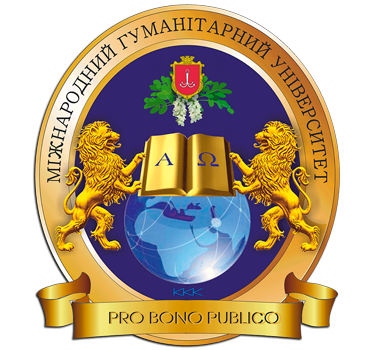THE EFFECT OF MORBID OBESITY ON THE LEVEL OF THROMBOTIC RISK DURING LAPAROSCOPIC MYOMECTOMY
DOI:
https://doi.org/10.32782/2411-9164.20.1-9Keywords:
uterine myoma, body mass index, risk factors, laparoscopy, thromboembolism, thromboprophylaxisAbstract
Uterine myoma is one of the most common diseases in gynecological practice. One of the main methods of surgical treatment of uterine fibroids in women of reproductive age is laparoscopic myomectomy. According to the WHO, a BMI of 25 and above is considered overweight, and a BMI of 30 and above is considered obesity. The connection between obesity and intravascular thrombotic complications (VTU) is confirmed by clinical data. To date, there is a fairly significant set of clotting, immunoenzymatic methods for assessing the system of regulation of the aggregate state of blood (RASK), the results of which give only a very approximate characteristic of the hemostatic potential. Therefore, instrumental methods of hemostasis assessment are of particular importance. Piezoelectric thromboelastography (TEG) is an effective method of hemostatic potential (HP) research, able to objectively reflect the vascular-platelet component, the coagulation link of the hemostasis system, and fibrinolysis. This technology allows you to visualize the process of blood coagulation, makes it possible to evaluate all phases of coagulation in real time and to quantitatively determine the intensity of pro- and anticoagulant potential. The goal is to study the influence of an increased body mass index on the level of thrombotic risk for adequate complex thromboprophylaxis in patients in the perioperative period during laparoscopic myomectomy, using an instrumental method of diagnosis – a low-frequency piezoelectric hemoviscometer. Materials and methods. The results of surgical treatment of 60 patients with uterine myoma who underwent laparoscopic myomectomy were studied. Patients were divided into 2 groups depending on BMI. Group 1 (16 patients) included patients with BMI < 30 kg/m2. Group 2 (44 patients) included patients with BMI > 30 kg/m2. The state of the hemostasis system before the operation, as well as on the 1st and 5th day after the operation, was monitored by standard biochemical tests, as well as by an instrumental method of assessing the functional state of the components of the hemostasis system and fibrinolysis – the piezoelectric thromboelastograph. The results. After the analysis of standard biochemical tests for the assessment of hemostasis before surgery, on the 1st and 5th day after surgery, no significant pathological changes were found in both groups of patients. When evaluating the functional state of the components of the hemostasis and fibrinolysis system using thromboelastography before surgery in 1 group of patients, there were no significant differences within normal parameters. In group 2, statistically significant (p < 0.05) deviations from the reference values of the hemostasiogram indicators were found in the direction of structural and chronometric hypercoagulation, increased thrombin activity, activation of the vascular-platelet link of hemostasis, inhibition of blood lytic activity. On the first day after surgery, changes in the links of the hemostasis system were observed in both groups of patients. In 1 group of patients, a decrease in chronometric indicators and an increase in structural indicators of TEG were noted, but they did not go beyond the reference values. In group 2, there was a significant decrease (compared to preoperative indicators) of chronometric indicators, an increase in the structural index of MA, as well as a significant increase in KTA, ICD, which indicates an existing increase in the risk of thrombosis in this group of patients, which requires thromboprophylaxis. After thromboprophylaxis, group 2 patients showed changes in hemostatic potential (HP) towards the normocoagulation trend. The fibrinolytic activity of blood before surgery in group 1 is within the lower reference values, and in group 2, inhibition of blood lytic activity is noted. A day after surgery, against the background of antithrombotic therapy, blood lytic activity normalizes. On the 5th day after surgery, a normocoagulation trend of hemostatic potential was noted in both groups of patients. Conclusions. In patients with uterine fibroids, who have a BMI >30, using the thromboelastography method, an existing thrombotic risk was detected at the perioperative stage of laparoscopic myomectomy, as evidenced by reliably significant (p < 0.05) changes in the main indicators of hemoviscometry. Standard screening methods of hemostasis system research do not provide a quick and adequate assessment of the hemostatic potential (HP), the response of the RASC system in response to surgical intervention; and also do not make it possible to fully assess the functional activity of the vascular-platelet link of coagulation and fibrinolysis. The use of low-frequency piezoelectric hemoviscometry allows you to reliably and quickly assess the kinetics of thrombus formation.
References
Тарабрін О. О., Сажин Д. С., Сухонос Р. Є., Володичев Д. С., Потапчук Ю. О., Суслов О. С., Тарабрін П. О. Порівняння інструментальних методів дослідження гемостазу. Клінічна анестезіологія та інтенсивна терапія. 2018; № 1: 23–28.
Тарабрiн О. Порушення системи гемостазу в онкологічних хворих. Онкогінекологія. 2015; № 3: 48–56.
Бухлал Н. А. Гемостазіологічні розлади і низькочастотна п’єзотромбоеластографія. Збірник тез Всеукраїнської конференції молодих вчених «АПРІТ – 2020».






